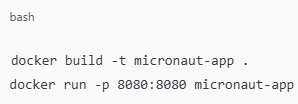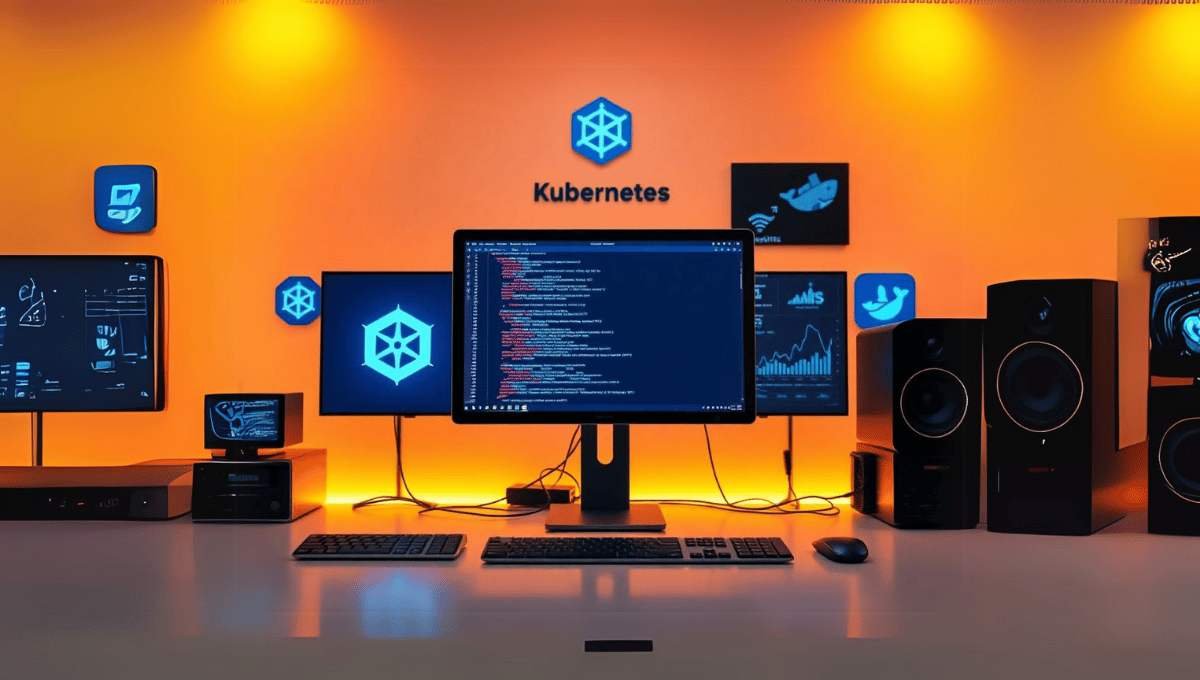The Micronaut Dashwing System is a modern framework built to empower developers with faster and more efficient ways to create applications. Whether you’re crafting microservices, building serverless functions, or deploying cloud-native architectures, this system provides everything you need. By prioritizing low memory usage, rapid startup times, and seamless integration with tools like Docker and Kubernetes, the Micronaut Dashwing System enables a smoother development experience. It’s more than just a framework it’s a toolkit that adapts to today’s demand for speed and scalability, helping developers tackle challenges while building applications that stand the test of time.
The Micronaut Dashwing System is a cutting-edge framework designed to improve application development by delivering performance and scalability. This system empowers developers to create lightweight applications with modern features such as native image integration and fast startup times.
Key benefits of using this system include reduced memory consumption, enhanced functionality, and faster development workflows. Whether you’re working on web applications, microservices, or serverless functions, the Micronaut Dashwing System simplifies development while improving reliability.
Table of Contents
Micronaut Architecture Overview
The Micronaut Dashwing System leverages a reactive foundation to enhance application efficiency. It eliminates reliance on reflection-based frameworks, significantly improving performance by simplifying processes and enabling faster, non-blocking resource handling. This design choice is ideal for modern cloud-native environments, where performance and scalability are paramount.
Core Components
- Dependency Injection: A minimal yet powerful tool that optimizes application performance by injecting dependencies at compile-time rather than runtime.
- Service Discovery: Automatically configures microservices for seamless integration and efficient communication, reducing manual workload.
- Event Loop: Provides non-blocking concurrency to handle large-scale requests, improving resource utilization and execution speed.
Comparison to Alternatives
The Micronaut Dashwing System is a superior alternative to frameworks like Spring Boot for lightweight applications. It requires less memory, starts faster, and is more compatible with cloud-native deployments. This makes it a top choice for developers seeking high efficiency.
Getting Started with Micronaut Dashwing
Initial Setup
- Install Java 11 or higher.
- Download the Micronaut CLI from the official website.
- Create a new project using the command:

Building Your First Application
Once the project is ready:
- Configure application settings in application.yml.
- Create controllers and services to manage routes and logic.
- Run your app with:

Micronaut provides robust documentation, ensuring an easy learning curve for new developers.
Native-Image and Micronaut
The Native-Image Integration feature in Micronaut converts Java applications into compact, standalone executables. This process reduces application size and improves runtime performance, particularly in serverless computing and containerized environments where low memory usage and fast startups are critical.
Why Native-Image Integration?
- Reduced Execution Time: Native images allow applications to run almost instantly, a vital advantage in serverless architectures.
- Minimized Resource Use: Optimized executables consume less memory and CPU, lowering costs in hosted environments.
- Rapid Deployment: The smaller, efficient builds enhance deployment on platforms like AWS Lambda, saving significant time.
Docker Integration Made Simple
Building Docker Images
- Add a Dockerfile to your project.
- Use these commands to build and run your Docker image:

Best Practices
- Optimize image size by using multistage builds.
- Keep environment-specific variables outside the codebase for security.
Docker integration improves portability, making deployments straightforward.
Advanced Applications of Micronaut Dashwing
The Micronaut Dashwing System powers a variety of modern application types. Developers can use it for event-driven services like real-time data streaming, scalable microservices, and flexible API gateways compatible with OpenAPI and GraphQL. With minimal configuration, it integrates effortlessly with cloud technologies to simplify workflows and deliver reliable performance.
Kubernetes Port Management
Deploying applications on Kubernetes requires streamlined port management for stable service connections. The Micronaut Dashwing System simplifies this by providing configuration tools to handle networking challenges effectively. It ensures your applications run seamlessly on containerized platforms.
Configuration Steps
- Service Exposure: Define accessible services through the application.yml file.
- Pod Configurations: Specify pod and service details with well-structured YAML files.
- Annotations: Add Kubernetes annotations to set health checks and lifecycle behaviours automatically.
Testing and Parameterization in Micronaut
Micronaut allows for comprehensive testing using parameterized tests, ensuring robust application performance under various conditions. By validating input, behaviour, and integrations, developers can proactively eliminate bugs and improve reliability. Libraries like JUnit and Spock simplify the process.
Why Parameterized Testing?
- Stability: Provides consistent results across different scenarios.
- Validation: Ensures application logic and responses are correct.
- Efficiency: Framework compatibility speeds up test development.
Tracing in Micronaut Dashwing
Tracing tools integrated with the Micronaut Dashwing System, like OpenTelemetry, Jaeger, and Zipkin, provide deep visibility into application processes. By tracking data flows and identifying performance bottlenecks, these tools make monitoring distributed systems efficient.
Best Practices for Tracing
- Trace Span Integration: Use OpenTelemetry annotations to define crucial trace spans.
- Visual Insights: Rely on Jaeger or Zipkin for easy-to-interpret data visualizations.
- Noise Reduction: Filter irrelevant spans to streamline metrics collection.
Practical Comparisons and Use Cases
Dashwing vs. Traditional Approaches
Micronaut Dashwing operates with lower runtime overhead compared to older frameworks. Its lightweight design and compile-time optimizations result in superior performance, especially in serverless or container-based deployments.
Popular Use Cases
- Event Streaming: Handles real-time data processing with Kafka or RabbitMQ.
- Data Pipelines: Powers analytics-heavy applications with streamlined architectures.
- E-Commerce: Enables scalable platforms with high traffic capabilities.
Overcoming Common Challenges
Benefits
- Fast execution with lower hardware costs.
- Easy scalability for high-demand applications.
Challenges
- It requires familiarity with tools like Docker and Kubernetes.
- Debugging native-image errors may take time.
Future Prospects of Micronaut Dashwing
The Micronaut Dashwing System evolves continuously with active contributions from the open-source community. Developers can expect improved features, including enhanced cloud-native capabilities and streamlined deployment processes. This steady progress ensures the framework remains a top contender in modern software development.
Essential Tools and Resources
Micronaut offers valuable resources for developers:
- Official Documentation: Find detailed guidance at Micronaut.io.
- Open-Source Libraries: Enhance functionality with a rich selection of compatible plugins.
- Community Forums: Connect with peers to solve problems and share insights.
Conclusion
The Micronaut Dashwing System offers a perfect combination of performance, efficiency, and modern features for application development. With its lightweight framework, fast startup times, and native-image integration, it is ideal for developers looking to build scalable microservices, serverless applications, or event-driven architectures.
From its architecture to tools for tracing and containerization, this system covers everything needed to streamline application workflows. It reduces overhead while simplifying tasks like Docker integration, Kubernetes configuration, and parameterized testing. As a framework, it remains forward-looking with strong community support and ongoing updates.
If you are seeking a reliable framework with low resource usage, ease of deployment, and the ability to integrate advanced tools, the Micronaut Dashwing System is worth exploring.
FAQ’s
What is Micronaut?
Micronaut is a JVM-based framework for building lightweight, modular, and cloud-ready applications. It emphasizes fast startup times, low memory usage, and a compile-time dependency injection approach.
Which companies are using Micronaut?
Companies like Target, Alibaba, and Oracle use Micronaut to build scalable, cloud-native applications with efficiency and performance.
How does Dashwing improve Micronaut?
The Micronaut Dashwing System enhances Micronaut by streamlining native-image integrations, enabling faster deployments, and improving runtime efficiency in resource-constrained environments.
What is the difference between Quarkus and Micronaut?
Micronaut is optimized for cloud-native applications and emphasizes compile-time optimizations. Quarkus focuses on Kubernetes-native applications with advanced GraalVM support.
What is the difference between Spring Boot and Micronaut?
Micronaut uses compile-time dependency injection, improving startup time and memory efficiency, while Spring Boot relies on runtime reflection, often requiring more resources.
What is the difference between Grails and Micronaut?
Grails is tailored for full-stack web applications with Groovy-based features, whereas Micronaut targets cloud-native, lightweight services using Java, Kotlin, or Groovy.
What is the difference between JHipster and Micronaut?
JHipster is a full-stack development platform combining Spring Boot and Angular/React, while Micronaut focuses solely on lightweight, back-end microservice architectures.
Is Dashwing suitable for large-scale applications?
Yes, the Micronaut Dashwing System is ideal for large-scale applications due to its scalability, efficient resource usage, and integration with modern deployment tools like Kubernetes.
What language is Micronaut supported in?
Micronaut supports Java, Kotlin, and Groovy, offering developers the flexibility to choose their preferred programming language.
How does Micronaut compare to Spring Boot?
Micronaut offers faster startups, lower memory overhead, and better suitability for serverless applications, while Spring Boot shines with its vast ecosystem and community support.

